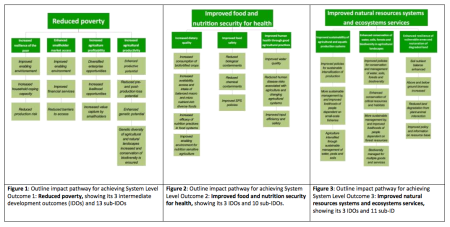(The) CGIAR is/are making a big push to elicit input on the new Strategy and Results Framework (SRF). You know the drill: a barrage of surveymonkeys, blogposts, tweets, Facebook posts, targeted emails, webinars, e-consultations, you name it, is coming your way. For all I know they’ll be knocking on doors in carefully selected neighbourhoods around the world. I’m always a little ambivalent when research organizations ask for help in prioritizing their work. On the one hand, it’s always good to ask. On the other, you’d have thought they would know by now.
Anyway, the outcomes of CGIAR’s work are now listed as:
1. Reduced poverty
2. Improved food and nutrition security for health
3. Improved natural resources systems and ecosystems services
And it is good to see the importance of the international genebanks in achieving these system-level outcomes recognized in the section of the SRF describing the particular niche of CGIAR:
The CGIAR community holds in trust globally unique genetic resources for a subset of agriculturally significant species of central importance to sustaining and advancing productivity and yield stability for the world’s smallholders in the 21st century.
Less good, however, to note that use of genetic diversity is thought to only contribute to the reduced poverty outcome, and then only via increased agricultural productivity. Sorry about the poor quality of the image showing this below, click on it to improve it a bit, but it wasn’t that much better in the original document:
There are “cross-cutting topics of global importance — women and youth; climate change; and capacity development — [that] will systematically strengthen and build coherence in research across all domains and Intermediate Development Outcomes (IDOs).” Should not conservation and sustainable use of agricultural biodiversity be one of these? Maybe I’ll respond to one of those tweets from @CGIAR.
What should be the priorities for International Agricultural Research for Development? http://t.co/OPWbKjFciV #ag4dev pic.twitter.com/ftQfg5WOAf
— CGIAR (@CGIAR) November 21, 2014
